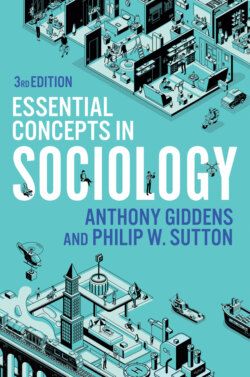Читать книгу Essential Concepts in Sociology - Anthony Giddens - Страница 64
Continuing Relevance
ОглавлениеIn spite of criticisms, it can be argued that all sociological studies in practice adopt some form of ‘simple’ realism regardless of theoretical and methodological perspective. What would be the point of carrying out research if we did not think there was a real social world out there worth studying? For many sociologists who see strict constructionism as an abdication of professional responsibility, critical realism offers perhaps the most attractive, non-positivist alternative currently available.
Critical realism has been applied to the study of crime and is seen as reinvigorating the policy relevance of criminology. Matthews (2009) argues that much contemporary criminology is pessimistic about reducing crime and recidivism, as nothing seems to work. But he suggests that realism requires interventions to be more than simply strategies or practices. Interventions embody theories about what might work in particular contexts, and an important aspect is not just the intervention but evaluations that identify the points at which the intervention fails. Because all interventions target active human agents, their aim is to change or shape the potential criminal’s reasoning process. For Matthews (2009: 357), even if such interventions do not have a radical transformative impact, ‘even small gains are gains’ that may lead to further reforms.
Gunnarsson et al. (2016) argue that, despite some ‘thematic alignments’, critical realism remains marginal within feminist theorizing. This may be because critical realism is still dominated by men and the central issues it deals with have been ‘masculine’ in nature. The authors also point out that critical theorists have tended to work with a clear distinction between sex and gender and the idea of a basic foundational biology, while queer theorists reject the notion that gendered identities are built on or require a biological base. Nonetheless, feminist theorists have become increasingly interested in ontology or theories of ‘being’, which brings them closer to key concerns of critical realism, while some critical realist work has explored conventionally ‘feminine’ subjects such as love (ibid.: 433–5). Clearly, there are still quite fundamental differences between critical realists and feminist theorists despite their recent constructive exchanges.
